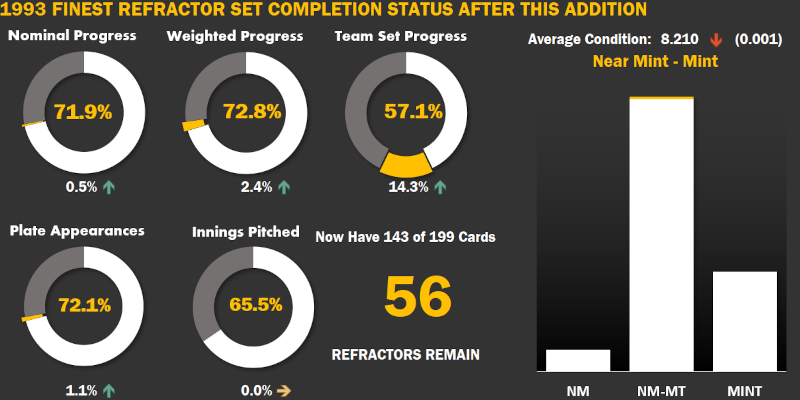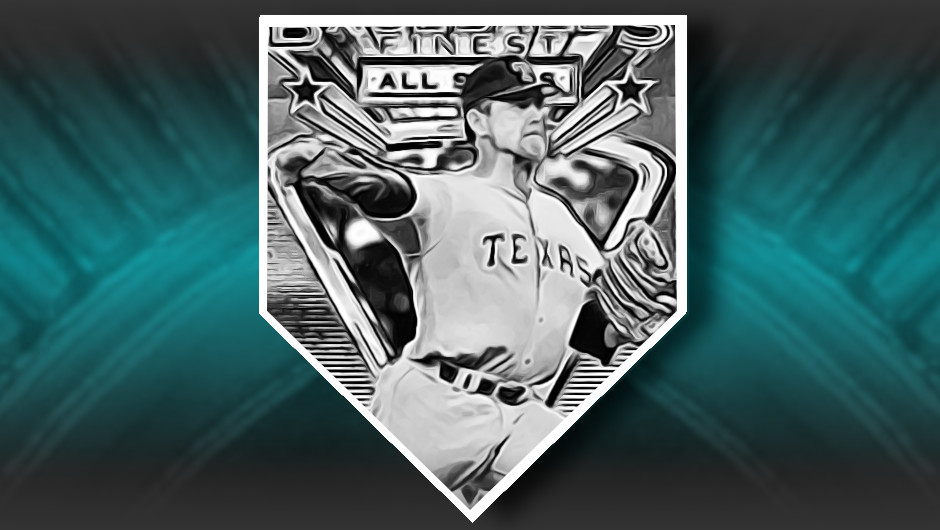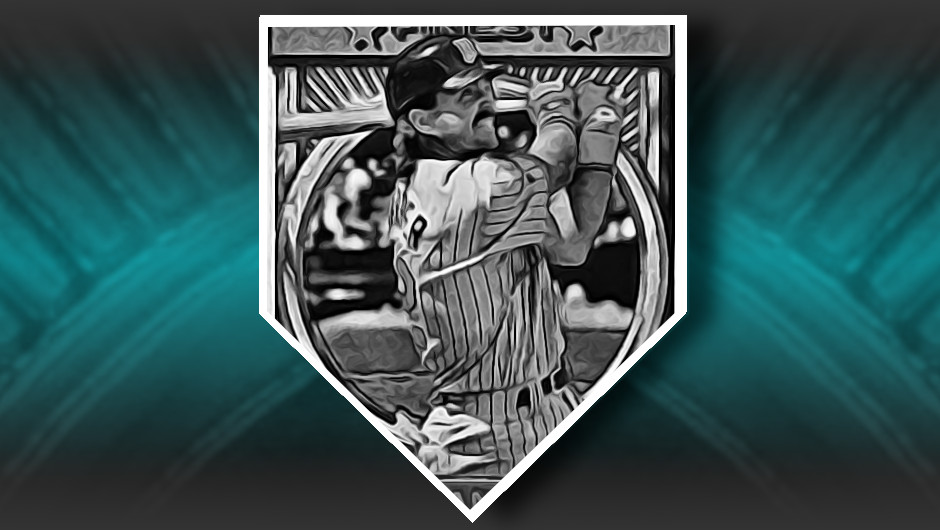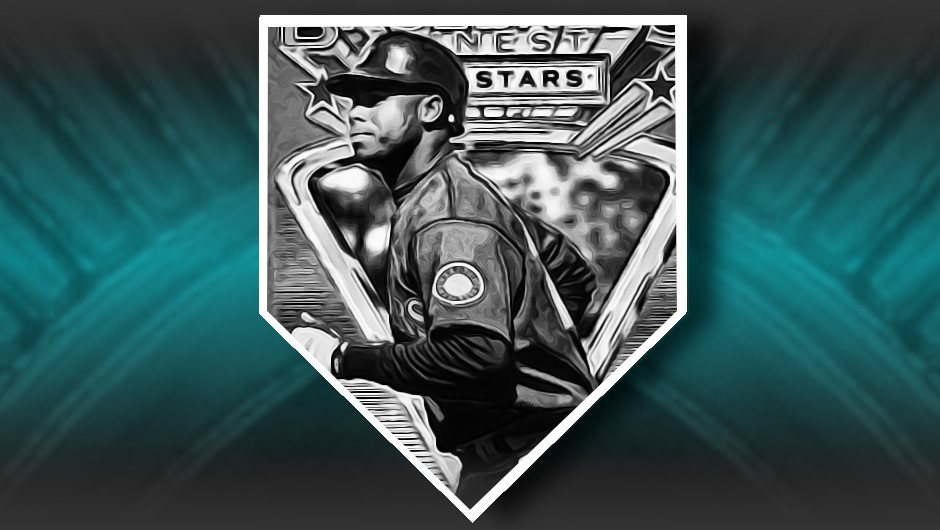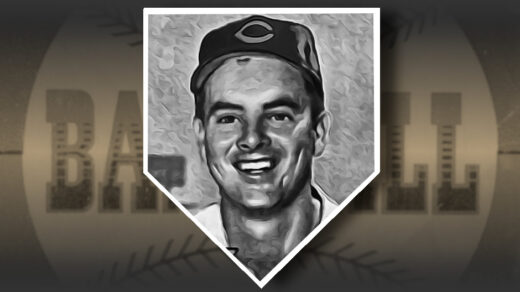I’ve always struggled with how to classify Ken Griffey, Jr. He started off with seemingly excessive media hype, being annointed the next great thing in baseball due to family pedigree, draft position, and good but not spectacular performance in his first couple seasons. Then, amazingly, he did the impossible and lived up to these very optimistic expectations. He hit more home runs (382) in the power-hitting 1990s than Barry Bonds (361). He hit the second highest number of HRs by age 30 of any player in history and did so without the suspicion of PEDs that followed many others of his era.
Griffey’s star fell back to earth with his 2001 season and for the next decade he would produce an average of less than a half game of WAR per season. Injuries limited his playing time and even when he took the field he was just an average player. So why are Griffey’s cards so often the focus of collector attention?
Finding an Analog for Griffey: Mickey Mantle
Including the effects of injury Griffey was certainly not the best player of his generation, but he is good enough to be a respectable part of the conversation. He is, however, the most significant player of that group in terms of card collecting.
To illustrate this, I find it helpful to find a parallel from another era. Mickey Mantle stands out as a useful proxy given that his cards are often the most sought after of any set in which he appears. Griffey and Mantle produced similar career totals in several categories with both experiencing wonderful beginnings followed by sharp declines in their final decade. Mantle was the better player of the two, generating substantially better WAR and significantly higher wOBA. The goal of this illustration isn’t to see if Griffey equaled Mantle’s on-field performance, but rather to understand why both are so beloved despite other athletes outpacing both.
Mantle played in an era in which a large number of all-time greats were active. He competed for more than a decade with Willie Mays, Hank Aaron, Ted Williams, Stan Musial, Eddie Mathews, and Frank Robinson. These half dozen rivals produced numbers that were at least similar to Mantle with the first four outdistancing him over the course of their careers. Mays, Williams, and Aaron in particular outpaced Mantle by large measures are prominently ranked in my top 10 players of all time.
Despite this relative performance, collectors looking for vintage cards routinely cast economic votes in favor of Mantle over other players. His 1952 Topps card in top condition alone can be reliably found to sell for more than all the other complete sets featuring the other players, making it clear which player is collectors’ favorite.
I think the reason for this lies in the nostalgia that drives most collecting. The collectors that drove the early explosion of card collecting in the late 1970s/early 1980s grew up watching Mantle and the others. Mantle routinely appeared in the post season and generated substantial news coverage as a member of the New York Yankees. His position in New York’s center field cemented his place in baseball history as the heir of Babe Ruth and Joe DiMaggio, bridging gaps with the past. His arrival also coincided with a seismic shift in the collecting landscape, placing his cards as premier parts of Topps’ increasingly popular products.
Griffey as a Mantle Figure
A look at Griffey’s contemporaries shows he was surrounded by a similar number of players who outperformed him. Barry Bonds, Alex Rodriguez, Chipper Jones, Frank Thomas, Wade Boggs, Jeff Bagwell, Cal Ripken, and Rickey Henderson can be argued to have equaled or surpassed his performance. However, like Mantle, Griffey has a few things going for him that make him stand out.
Griffey’s collecting bona fides were established at the same time the card collecting world underwent another shift. He first appeared in Upper Deck’s landmark 1989 set, creating an interesting parallel to Mantle’s 1952 Topps appearance. His arrival also coincided with the peak of the hobby’s popularity when the most people had exposure to collecting cards. He reached peak performance at the same time as collectors began to chase inserts and parallels, making his cards the ones that they most remembered from the era.
Griffey was a media darling early on. Coverage of his backwards hat was something that produced countless imitations on Little League fields across the country. For fans that stepped back from the game after the 1994-95 strike his memories remained a core part of what preceded the labor unrest. Years later the post-strike period would become widely known as the steroid era. Reputations of many of his contemporaries were tarnished by PEDs, but fans generally give Griffey a clean bill of health. The stigma of PEDs make it seem wrong to root for players like Bonds but makes pulling for Griffey feel right.
Griffey’s team affiliations also connect to nostalgia. All but one of his productive seasons came in Seattle and he was undoubtedly the face of the franchise. Mariners fans have no reason for bad memories of his tenure and can look back at his time as potentially saving the team from leaving the city. Collectors that came of age after Mantle’s 1951-1968 career remember Griffey’s father as an integral component of the Cincinnati Reds championship teams of the 1970s. Junior reconnected with the team for the second half of his career, bridging a historical gap and once again bringing back memories.
| GRIFFEY STATS | PA | .AVG | HR | RBI | SB | BB | K% | wOBA | WAR |
| Career | 11,304 | .284 | 630 | 1,836 | 184 | 1,312 | 15.7% | .384 | 77.7 |
| 162 Game Pace | 685.6 | .284 | 38.2 | 111.4 | 11.2 | 79.6 | 15.7% | .384 | 4.7 |
1993 Finest Refractor
Two of the sets I am building feature Ken Griffey, Jr. cards. One of these is arguably the most recognizable card of the 1990s, rivaled only by Derek Jeter’s 1993 SP rookie card. Griffey’s 1993 Finest Refractor has become the focal point of the set. In the early days of the set’s popularity, the Nolan Ryan and Cal Ripken cards were considered the key components. PSA’s very dated checklist weightings place Griffey below Ryan and Ripken and on par with Mark McGwire. When collectors returned to the hobby in force in 2020 it was the Griffey card they wanted.
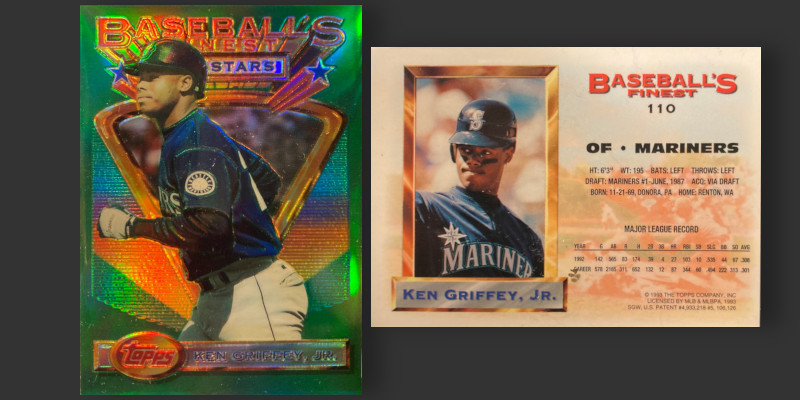
Obtaining the card made for an interesting night. The card appears for sale often enough given Griffey’s popularity, but an influx of returning hobbyists pushed up the price beyond what I thought was obtainable. I was tracking a different refractor in an auction and saw a Griffey was also available. The price was reasonable, and I placed a bid, expecting to quickly be out of the running well before the gavel dropped. To my surprise I was the leading bidder when bidding ended at midnight. I do have to admit to being nervous throughout the process as this is by far the most substantial card purchase I have ever made.
Adding this card to the ’93 set is a big step towards completion. With additions I made in December, there is only one of the set’s four main pillars remaining to be found.
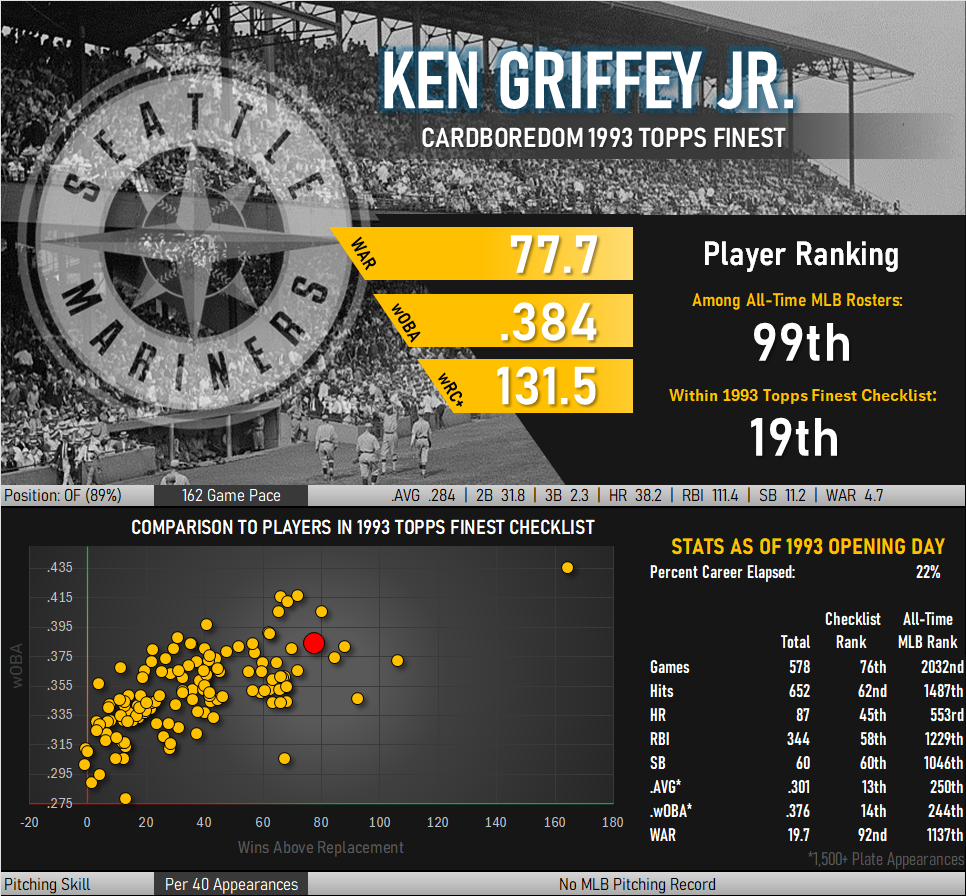
1994 Leaf Gold Stars
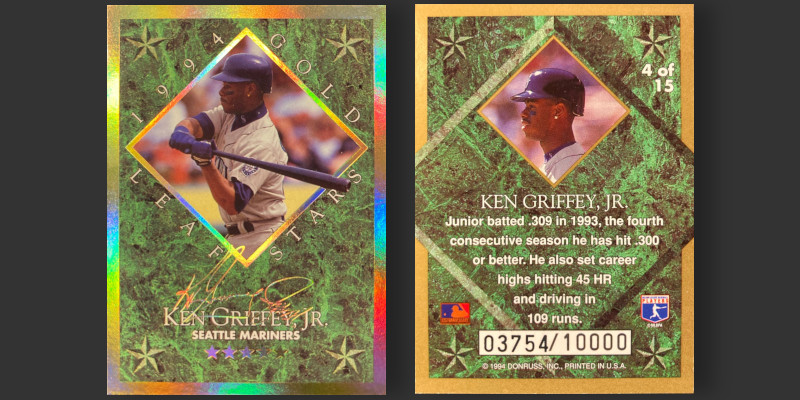
The key card of almost any set from the 1951-1969 is the Mickey Mantle card. Likewise, the most sought after component of sets 40 years later is usually Ken Griffey, Jr. and this is no exception. I wrote earlier about completing the ’94 Leaf Gold Stars set in less time than it takes to watch a ball game. The Griffey card was the only one that generated any substantive collector interest and required spending more than $15 to acquire. The card sort of blends in with the whole “generic Griffey 1990s insert” look, but the set likely wouldn’t hold my interest if he had been omitted from the checklist.
